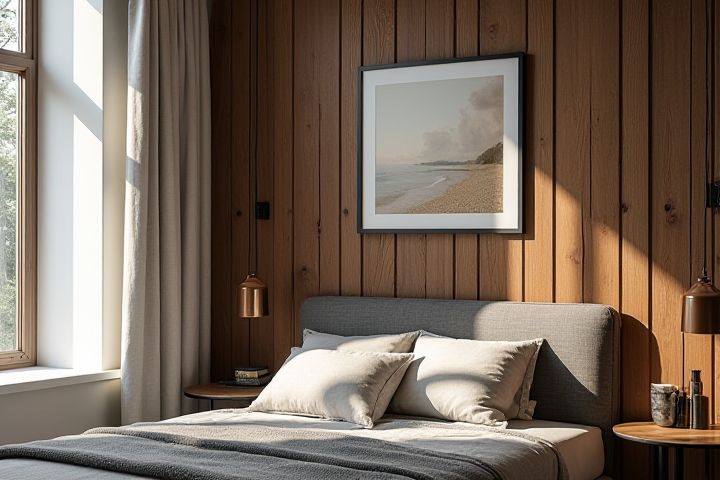
To personalize a house design, begin by assessing your lifestyle needs and aesthetic preferences, considering factors like space, functionality, and style. Integrate unique architectural elements, such as custom-built shelves or distinctive lighting fixtures, that reflect your personality. Choose a color palette that resonates with you, incorporating shades that evoke the desired atmosphere, whether calming or energizing. Furnishings should echo your taste, whether through vintage finds, modern pieces, or handcrafted items that tell a story. Lastly, add personal touches such as artwork, family photos, or meaningful decor that create a sense of belonging and connection within your space.
How To Personalize A House Design
Understand your lifestyle
Understanding your lifestyle is crucial for personalizing house design. Consider your daily routines; for example, if you enjoy cooking, prioritize a spacious kitchen with high-quality appliances and ample counter space. If you entertain frequently, incorporate open-concept living areas that promote social interactions. Understanding your family dynamics helps in creating functional spaces, ensuring that each area caters to your unique needs and preferences.
Choose a unique color palette
Selecting a unique color palette is essential for personalizing your house design, as it sets the mood and reflects your personality. Consider incorporating colors that resonate with your style, such as earthy tones for a cozy vibe or vibrant hues for an energetic atmosphere. Experiment with combinations of complementary shades to create visual interest while maintaining harmony in your space. Accentuate architectural features and furnishings by using your chosen colors thoughtfully, ensuring a cohesive and inviting environment throughout your home.
Incorporate personal interests
Incorporating personal interests into your house design creates a space that reflects your unique personality and lifestyle. Consider using a color palette inspired by your favorite hobbies; for instance, blues and greens for ocean enthusiasts or warm earth tones for nature lovers. Integrate custom artwork or decor that showcases your passions, such as framed photography from your travels or sculptures that represent your favorite themes. By dedicating specific areas, like a reading nook filled with your book collection or a gallery wall for your art, you ensure that your home resonates with your individual tastes.
Mix textures and materials
To personalize your house design, consider incorporating a variety of textures and materials that resonate with your style preferences. For example, combine sleek metal fixtures with warm wooden accents to create a harmonious yet contrasting appearance. Using a mix of fabrics, such as plush velvet and breathable linen, can enhance comfort while adding depth to your living spaces. Incorporate elements like concrete, glass, and natural stone to achieve a dynamic and visually appealing environment that reflects your individuality.
Select custom furniture
Incorporating custom furniture into your house design allows you to tailor each space to reflect your unique style and functional needs. Begin by assessing your lifestyle; for instance, if you entertain frequently, consider a spacious, custom dining table that enhances your gathering experience. Select materials and finishes that resonate with your personal aesthetic, such as reclaimed wood for a rustic charm or sleek metal for a modern appeal. By strategically choosing custom pieces like built-in shelves or bespoke sofas, you create an inviting atmosphere that feels authentically yours.
Use personalized art pieces
Incorporating personalized art pieces into your house design can significantly enhance its uniqueness and reflect your individual style. Consider integrating custom artwork that resonates with your experiences, such as commissioned portraits, photographs from memorable travels, or handmade crafts from local artists. By strategically placing these pieces in focal areas--like living rooms or entrance halls--you create a visually engaging environment that tells your story. Aim for a balanced mix of color, texture, and size, ensuring that each piece complements the overall aesthetic of your home while still standing out as a defining feature.
Implement smart home features
Incorporate smart home features to enhance your personalized house design, ensuring comfort and efficiency. Start with a smart thermostat like Nest or Ecobee, allowing you to customize temperature settings based on your schedule and preferences. Integrate smart lighting systems such as Philips Hue, which offers customizable color and intensity options, enhancing both ambiance and energy efficiency. Incorporating voice-activated assistants like Amazon Alexa or Google Assistant can streamline your home automation, enabling you to control devices effortlessly while adding a modern touch to your living space.
Prioritize function over trends
When personalizing a house design, prioritize functionality by assessing your daily routine and identifying essential spaces. For example, a well-organized kitchen layout can enhance efficiency, making meal preparation smoother with easy access to appliances and storage. Incorporating multi-functional furniture, such as a sofa bed or extendable dining table, maximizes space without sacrificing comfort or utility. By focusing on your specific lifestyle needs rather than fleeting trends, you create a home that serves you best, increases usability, and provides lasting satisfaction.
Optimize natural light
To optimize natural light in your house design, consider installing large windows, typically larger than 10 square feet, to enhance daylight penetration. Incorporating skylights can increase illumination significantly, providing an additional source of light directly from above. You can use reflective surfaces, like mirrors and light-colored walls, which can amplify and distribute natural light throughout your space. Arranging your floor plan to include open spaces, particularly in south-facing rooms, will also help maximize light exposure during the day.
Create unique focal points
To create unique focal points in your house design, start by identifying key areas such as living rooms or entryways. Consider incorporating striking features like a custom fireplace, an oversized piece of art, or a vibrant accent wall painted in a bold color. Integrating architectural elements, such as a statement staircase or large windows that invite natural light, can significantly enhance visual interest. Your focal points should reflect your personal style and preferences, creating a space that feels uniquely yours.
